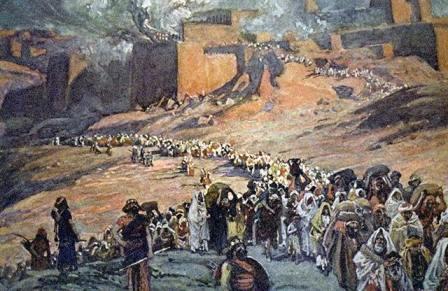Home | About Us | Directions | Bulletins | Sermons & Audio | Cross Of Christ Studies | Classes | Student and Parent Resource Page | Dangers Facing the "Non-Traditional"
Click Here for the Latest Edition of the Auburn Beacon
To Subscribe to
the Auburn Beacon please send an E-mail to:
larryrouse@aubeacon.com

Hear Buddy Payne
Speak in Auburn, Alabama
All Joy and Peace in Believing
![]()
![]()
Our God He is Alive
(Evidences from DNA)
![]()
![]()

The Final Stages of Israel's Apostasy
Adult
Bible Class in Progress - Sunday
Morning 9:30 - Auditorium Class
Planning to Visit Us?
What
to Expect
Current Class
Information
Thoughts To Ponder
You will need
the following viewers
to view many of the
files on this site.
![]()
Click here to
download
Adobe Acrobat Reader
![]()
Click here to
download
Microsoft PowerPoint Viewer
University church of Christ
Assembly Times
Sunday
Bible Classes (9:30)
AM Worship (10:20)
PM Worship (6:00 pm)
Wednesday
Bible
Classes
(7:00 PM)
Location
449 North Gay Street
Auburn, AL 36830
Click Here for Specific
Directions
I Know My Redeemer Lives
by Wayne Jackson
Centuries before the birth of Christ, Job, the suffering patriarch of Uz, exclaimed, “I know that my redeemer lives…” (19:25).
Job could not possibly have appreciated the magnitude of his statement, nor how his confident hope would be fulfilled. He was suffering terribly — both physically and emotionally. But he sincerely believed that his pain and anguish were out of proportion to any evil he unintentionally might have done. Though he spoke of God irreverently at times (like a pet that bites when its master is attempting to treat a wound), underneath it all he maintained a confidence that eventually “justice” would issue from his righteous Maker (cf. Job 13:15 KJV; ESV).
There is a wonderful song with the lyrics, “I know that my Redeemer lives….” We should sing it with zest. Another song, however, asks this question, with answer supplied: “You ask me how I know he lives? He lives within my heart.”
I am not so sure this phraseology, as commonly interpreted, is prudent. If a person has these thoughts in his mind, “He lives in my heart [mind] because of the credible, historical facts I have learned,” that is one thing. But to use the term “heart,” as such frequently is employed by the religious community at large, is quite another thing.
For example, a sincere Roman Catholic may claim, “I know that Mary hears my prayers, and conveys them to her Son. How do I know? I know it in my heart.”
How many times have we heard the statement: “I know I am saved; my heart tells me so, and I trust it. I would not feel this way if I were not truly saved.” But such statements are in conflict with the truth as revealed in numerous biblical passages (cf. Proverbs 14:12; Acts 23:1; 26:9; 1 Timothy 1:13b).
We do not “know” that Christ lives, just because this idea makes us feel good. Here is how we really know, and know that we know.
We have the testimony of the scriptures. (1) David prophesied that though Christ would be murdered, he would rise from the grave (Psalm 16:10; cf. Acts 2:25ff). (2) Isaiah foretold that while Jehovah’s suffering Servant would be put to death, nonetheless he would “see his seed” (i.e., numerous spiritual offspring, cf. Isaiah 11:1; Romans 7:4; Hebrews 2:13), and his days would be prolonged (Isaiah 53:10b). (3) Jesus himself promised he would be raised from the dead (Matthew 16:21; John 2:19, 21). (4) Many witnesses testified to the fact that Christ was raised to die no more (Romans 6:9; Revelation 1:18). For a consideration of some of those witnesses, see 1 Corinthians 15:1-8.
The second issue is this: how does one know that the biblical record, asserting these prophecies and affirmations of fulfillment, is true? That is an excellent question, but the answer is not, “because I feel it.” Rather, the solution is in evidence.
Is there a sufficient body of evidence that demonstrates the Bible documents could not be of human origin, and therefore, by default, must be divine? Indeed there is. (1) There is the astounding unity of the volume — 66 books, written over sixteen centuries, yet speaking as one voice. (2) There is the matter of prophecy — history written in advance. Thousands of prophetic details that no human could possibly have predicted are fulfilled with precision. (3) The flawless accuracy of the Bible, in history, science, geography, etc., absolutely defies any “natural” explanation. (4) The lofty ethical tone of the scriptures testifies to the fact that mere man would not have written this volume if he could have. (5) The things the Bible does not contain, which it surely would have — if left to the imaginative minds of men — are conspicuously absent, e.g., a flamboyant, absurd explanation for God’s “origin” (common in pagan literature), his appearance, etc.
These areas of evidence, and many others, buttress our faith. True faith is not a blind leap into the dark. It is grounded in solid history. Upon this basis we “know.”
Other Articles by Wayne Jackson
2 John 9 - An Abused Passage
That Mysterious Disciple
The Value of the Kingdom of Heaven
Did the Early Church Observe the Lord's Supper Daily?
The New Testament Pattern of Giving
Aid or Addition - What is the Difference?





